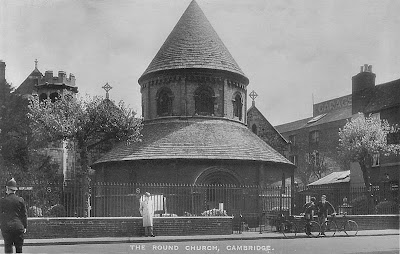CAMBRIDGE UNIVERSITY - A VERY ANTIQUATED UNIVERSITY - HISTORY
EARLY HISTORY :
Cambridge as a town has an existence record as early as 875 A.D. A group of professors moved out of Oxford University in 1200 and got shelter in Cambridge, which was then a flourishing and merchandising locality. By 1226 there were enough scholars to create an educational organisation, who were delineated by a Chancellor. They had organised regular courses of study by then.
 |
| THE CAMBRIDGE UNIVERSITY |
But there were always disturbed by the local people. King Henry III, gave protection to the scholars by 1231 and sorted out their stay in Cambridge. He also made a rule by which only those who are registered under a Master to learn can stay in the town.
The students studied a foundation course of logic, grammar and arts. Later on they studied music, geometry & maths, finishing their course with a Bachelor or Masters degree. The method of teaching was reading our of text by the master and explaining it to them. Exams were conducted in the form of debates, between the juniors and seniors.
Graduation took place in the presence of the Chancellor, Vice- Chancellors & other Masters of the University. The categories of different scholar's were extricated by an array of alterations on the gown, hood & cap. This basic system of Graduation is still been followed.
 Apart from the teaching Masters, a few more were needed to sort out the various other problems faced by the University. So two Proctors (delegates), were appointed on yearly basis. They took charge of the treasures, books & examinations. The university needed rules to run a disciplinary campus. The rules were made & written down randomly on books maintained by the Proctors.The very primeval acknowledged rules of the University where made in the mid 13th century, which is even found now well preserved in the Biblioteca Anqelica in Rome.
Apart from the teaching Masters, a few more were needed to sort out the various other problems faced by the University. So two Proctors (delegates), were appointed on yearly basis. They took charge of the treasures, books & examinations. The university needed rules to run a disciplinary campus. The rules were made & written down randomly on books maintained by the Proctors.The very primeval acknowledged rules of the University where made in the mid 13th century, which is even found now well preserved in the Biblioteca Anqelica in Rome.
THE CAMPUS
There was no particular campus for the university in the very beginning. It relied on St. Mary's & St. Benedict's Church for conducting their meetings. Soon few Masters joined hands bad built some & hired some places for teaching & staying. Some of these stood till the 12th century.
During the 14th century the University acquired a place known as "SENATE-HOUSE HILL" and constructed few building known as "School". These have survived til today and are known as Old School. Later on many started Donating their land to the college.
The initial college was PETERHOUSE, organized by Hugh Balsham in 1284 (bishop of Ely). Others were Michael house, Clare, Gonville Hall, Pembroke, Trinity Hall, Corpus Christi, King's & Queen's and St. Catherine's came up in the next hundred years.
 |
| JOHN FISHER |
Before the middle of the 16th century, college began to run on its own. One of the most important person in the development of Cambridge was JOHN FISHER, who was a Proctor, Master of Michael house, Vice-Chancellor, Chancellor(1509-35). He was the chief advisory to the Mother of King Henry VII - Lady Margaret Beaufort.
16TH CENTURY
In this century a now college -TRINITY was inaugurated by Henry VIII. And many other halls were re-organised to form bigger-ones. All the now foundations were mainly aiming to give education for men who will become priests, later on in the National Church. But the new Trinity College attracted many ordinary students for the first time.
Printing of require teaching materials started as early as 1520. But regular publications were started from the year 1584. Cambridge Publications is one of the primeval and the greatest academic publisher of the world.
 |
| The Pitt Building which was the head quarters for the press |
 |
| The letter patent of Cambridge University Press by Henry VIII allows the press to print "all manner of books" |
 |
| SIR ISSAC NEWTON |
19th & 20th CENTURIES:-
Though there were lot of amendments made in the curriculum & co-curriculum of the college more changes were needed to made to meet the requirements of the students. This was mainly due to the political changed which were taking place in the country.
Many of the inmates of the University fought in World War I. About two thousand of them died in the war. The University faced a financial crisis. As a result of this it received financial support from the state. This continues till today.
AFTER WORLD WAR II
It was a changing time for the University. The reputation of the University improved drastically after World War II. Many renowned Scientists like Clerk Maxwell & Darwin's work was acknowledged after the war and many students started showing interest to pursue their studies in the University. With the state aid many more branches of research and education were introduced.
FUTURE OF THE UNIVERSITY:-
The university is honestly eminent for its patrimony of education, consequential role & brilliant constitution.It is one of the world's most oldest society for research and learning. It is the most distinguished academy of higher education.












